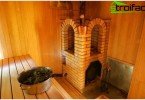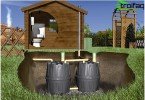Water tank in the bath
Bath and water are inseparable concepts. The stones in the stove are watered with water to get that very “light” steam, and one cannot do without it in the shower “compartment”. Accordingly, a water tank in the bath (and not just a tank, but a high-quality tank) must be present in the interior. What criteria will be decisive when choosing it? What is it worth to pay attention to? So let’s get started.
Content
- Choose the optimal parameters
- Tanks for water for a bath – types
- Determined with the material
Choose the optimal parameters
Before deciding on the size of the tank, think about how many individuals will be in this bath at a time. Planning to bathe alone? Then more than 50 liters of heated water, believe me, is not required. Are you counting on a “productive” rest in the steam room with a company of good friends? The water tank in the bath in this case must be at least 80 l.
The thickness of the walls of the container will directly depend on the size you choose. For a stainless steel tank with a volume of not more than 50 l, the optimum thickness is 1 mm. The larger the capacity, the thicker the steel. The tank “for the company” must have a wall thickness of at least 1.5 mm.
Thick walls of the tank contribute to a more uniform heating of water and long-term storage of stored heat. On such a parameter as “wall thickness” it is definitely not necessary to save. However, it is worth noting that not only the price of the tank will increase in proportion to the thickening of the walls, but also its weight (massiveness).
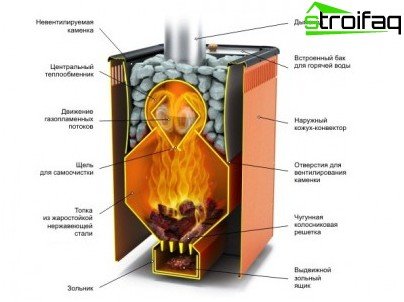
Oven with integrated water tank
Carefully consider the choice of tank design – be sure to ensure that the number of leads is optimal, and see how things are going with the input.
Tanks for water for a bath – types
Depending on the location relative to the furnace, they are classified as follows:
- built-in oven (traditional);
- located on the pipe;
- remote.
A tank built into the oven is the “classic” of the genre. The bottom of the boiler is installed directly in the upper part of the furnace – this allows the liquid to heat up in a minimum time period and store the “acquired” heat for a long time. As you understand, in this case, a hot flame is in direct contact with the container; the described construction is not dependent on the position of the chimney. Water is taken from the integrated tank either through the top cover or through a tap provided for this purpose..
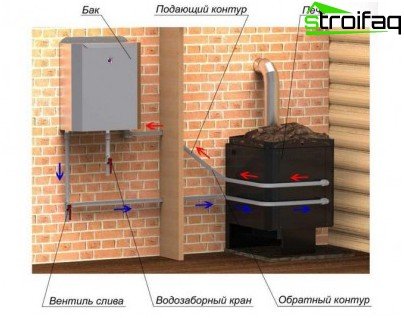
Portable water tank
The furnace, equipped with heat exchangers connecting it to the tank, gives the opportunity to use an external water tank that is not “tied” to any particular position. Here, the convective principle “runs the trick”: cold water from the tank “goes” to the heat exchanger and, when heated, returns. The advantage of this arrangement is that the remote tank can be installed (relatively) anywhere. For example, in the washing – there the demand for hot water is extremely high (in comparison with other bath rooms).
The “stability” of temperature in the tank with a minimum of energy costs is probably the most desirable combination. The installation of the tank on the pipe, which serves to remove smoke from the furnace, will make it possible. The formation of smoke (the result of burning fuel) is accompanied by a temperature of 500 ° C, so the water in the tank placed on the pipe heats up almost instantly.
Having ventured precisely on such a constructional option, feel free to purchase a tank of a solid size. After all, a pipe, as a heating element, can be used along its entire length: from the furnace to the ceiling. The water will heat up quickly, evenly.
Determined with the material
When choosing a tank for a bath, be sure to pay attention to the material from which it is made. The most popular today are steel tanks. It is not surprising, because steel has a lot of significant advantages. A product made of it is not subject to harmful (corrosive) effects of moisture – note that this factor is extremely important for given operating conditions. The stainless steel is characterized by excellent heat conductivity – the water in the tank heats up quickly. In addition, steel is quite resistant to sudden changes in temperature: during jumps, it practically does not deform.
Cast iron, and, accordingly, tanks from it, is no less popular. Although the water in them is not heated very quickly, but the heat is stored for a long time – enough for a thematic pastime in a small company. Cast iron is also not at all afraid of high temperatures and is not amenable to corrosion; its only drawback is its impressive weight.
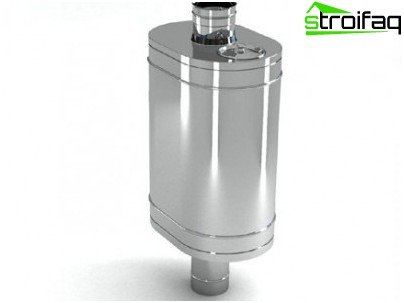
Tank located on the pipe: the water is heated by the combustion products passing through the pipe
Tank maintenance is simple, it does not require any specific knowledge; this “element” will not deliver you big troubles. The main thing is not to forget about the basic rules of operation and installation, prescribed in the instructions. Build a tank yourself? Remember safety.
The duet of a good stove and a good tank will help you create a unique style in the room, fill the bathhouse with warmth; comfort pleasing to the eye. Be extremely serious and responsible when choosing significant elements (one of which, of course, is the tank) – this is the only way you can again and again enjoy the pleasant stay. The bathhouse should charge you with a good mood, give you excellent well-being, and not suggest the idea of ill-conceived designs.
Enjoy Your Bath!


